Fisherman and Chavittu Nadakam artist George Vadakkeparambil | Photo Credit: KR Sunil
Silosh George Chavittu, a fisherman from the coastal village of Chellanam in Kochi, moonlights as a Nadakam artist. In his 30s, George is one of the few young practitioners of 16th-century dance drama. He often attends rehearsals after the day’s work. Once on stage, however, he effortlessly transforms into his character, effortlessly belting out verses from a different era.
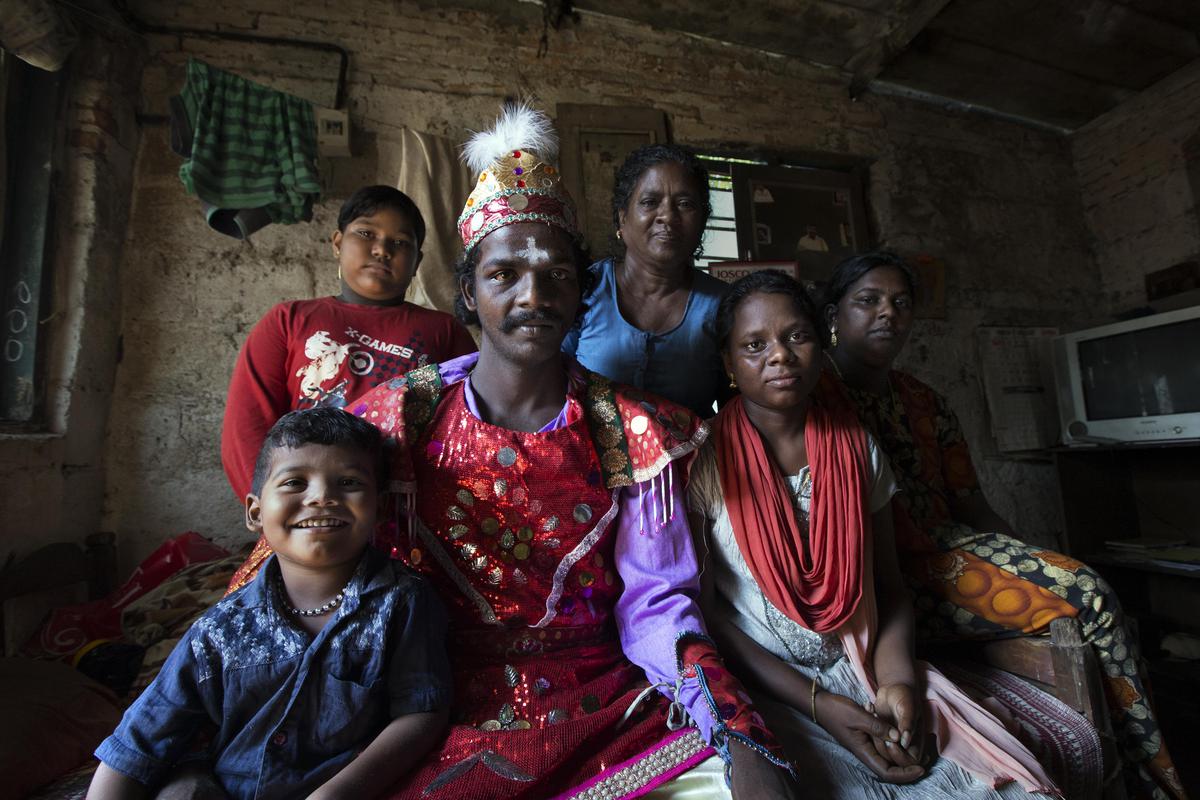
Silosh George with his family | Photo Credit: KR Sunil
Intricately tied to the sea by artists and influenced by the legacy of Chavittu Nadakam – an art form believed to have originated in the coastal regions of Kodungallur-Kochi-Alappuzha during Portuguese rule – photographer KR Sunil documents them over the past seven years are doing .
George, like many of his fellow actors, lives along the Kochi-Chellanam coast. Although they depend on the sea for survival, they are constantly at loggerheads with it. The region has borne the brunt of climate change; Even a peaceful December brings tidal floods. “Their living conditions are in complete contrast to the characters [kings, queens, warriors] They play on stage,” says Sunil. It was this contradiction that drew him to them.
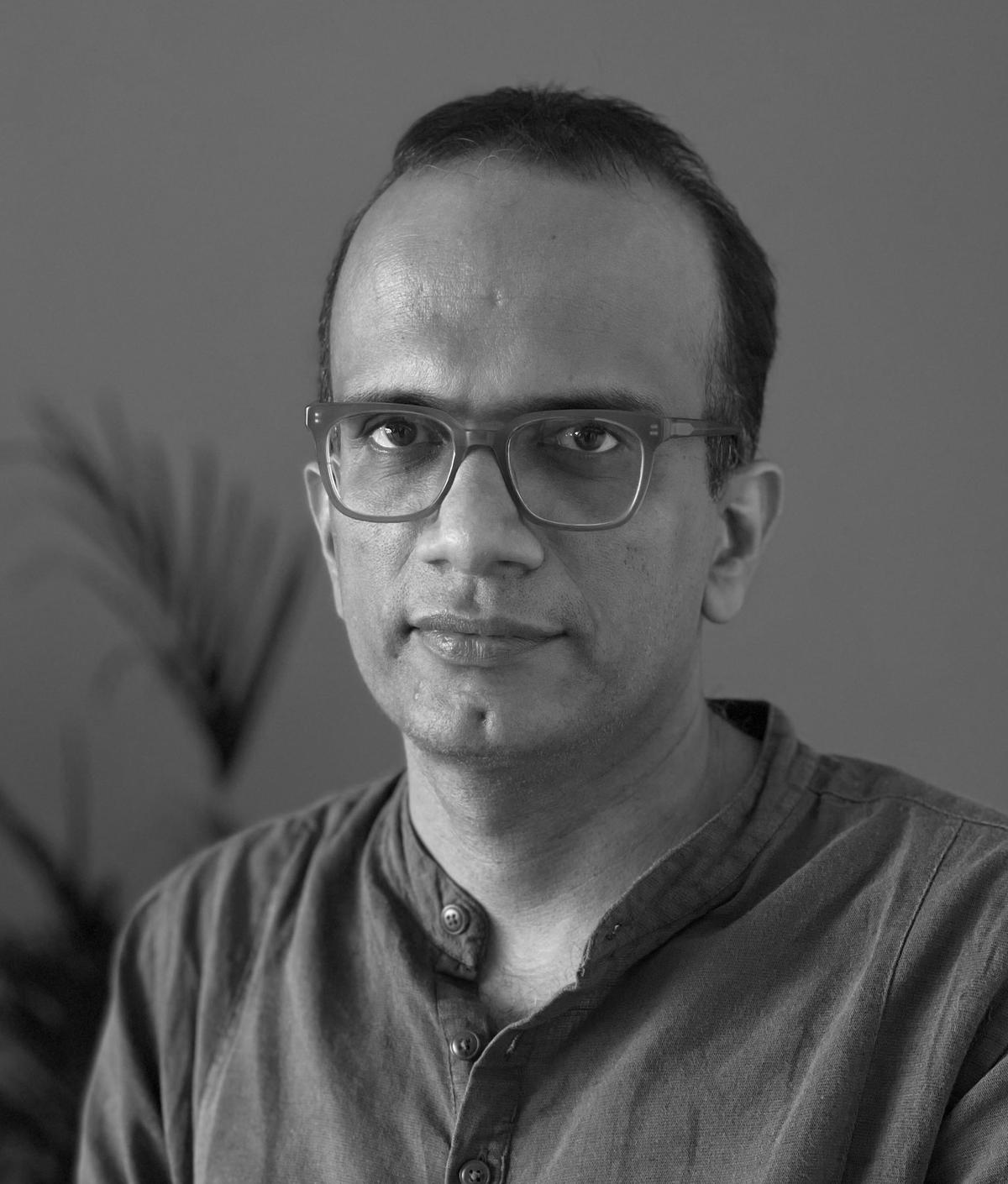
Photographer KR Sunil | photo credit: special arrangement
a losing battle
Sunil first saw George and other artistes in 2014 at an annual Chavittu Nadakam festival at Gothuruthu, an island in Paravur, Ernakulam. A particularly boisterous group of men and women, who required extra coats of makeup because of their dark skin, radiated a rare kind of energy. Their operatic costumes and resonant voices belied the harsh reality of their lives. “They are passionate and proud of their craft. While it has evolved over the years, these people hold on to the ancient version, which uses verses in Tamil, which are not recorded but sung live on stage,” he says.
In time, the photographer from Kodungallur befriended and started visiting their homes. “There are instances when only one cot was left in some of their houses, with the whole family waiting for the water to recede. These are marginalized people who are fighting climate change and poverty.
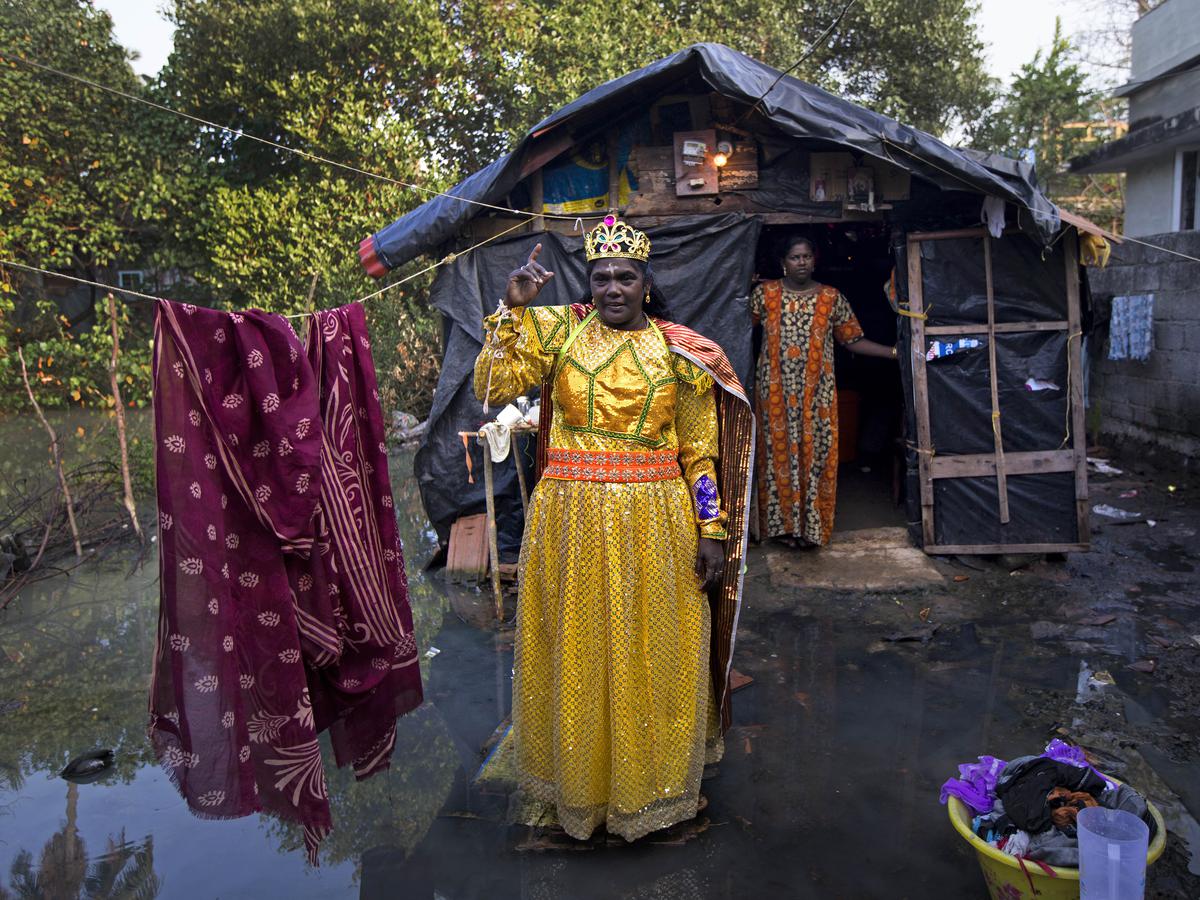
Alphonsa poses as a queen outside her hut surrounded by water. Photo Credit: KR Sunil
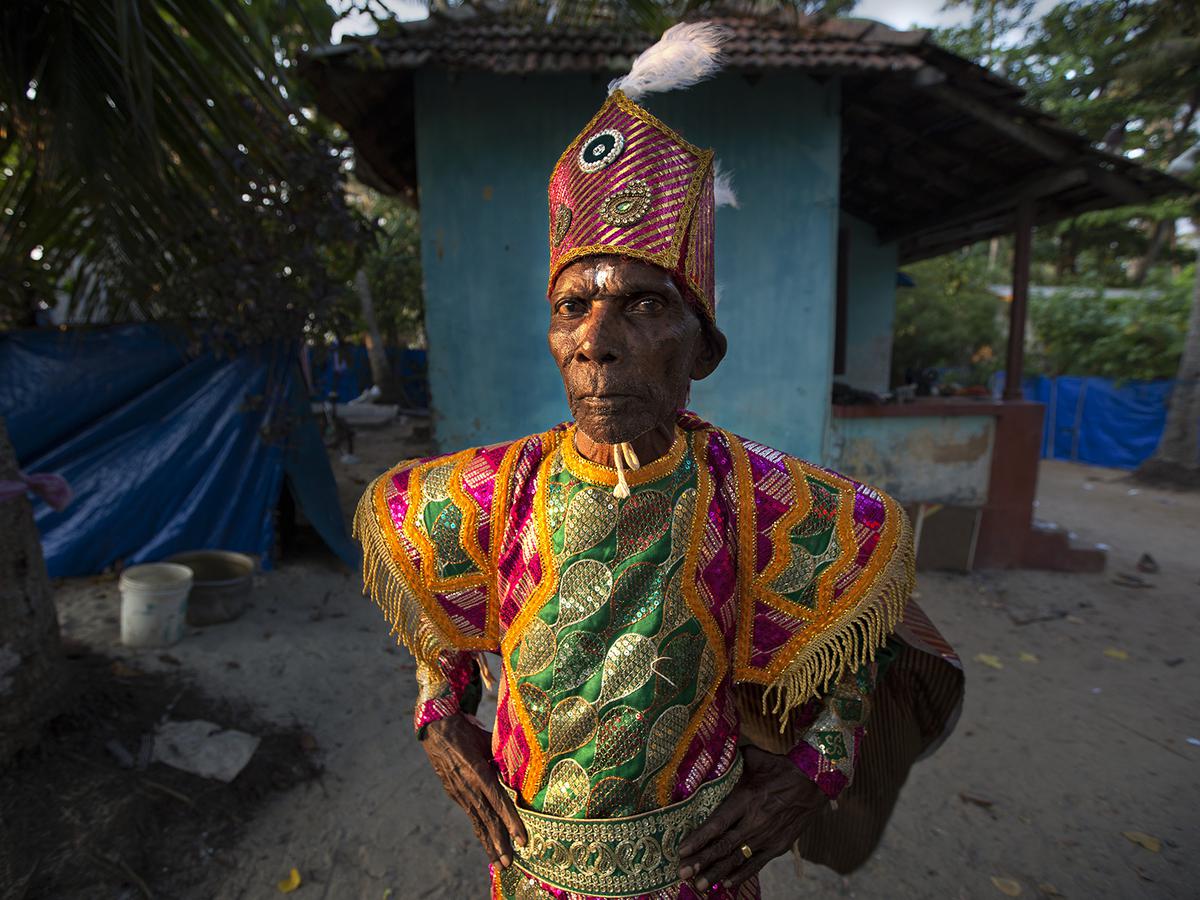
A Chavittu Nadakam Artist | Photo Credit: KR Sunil
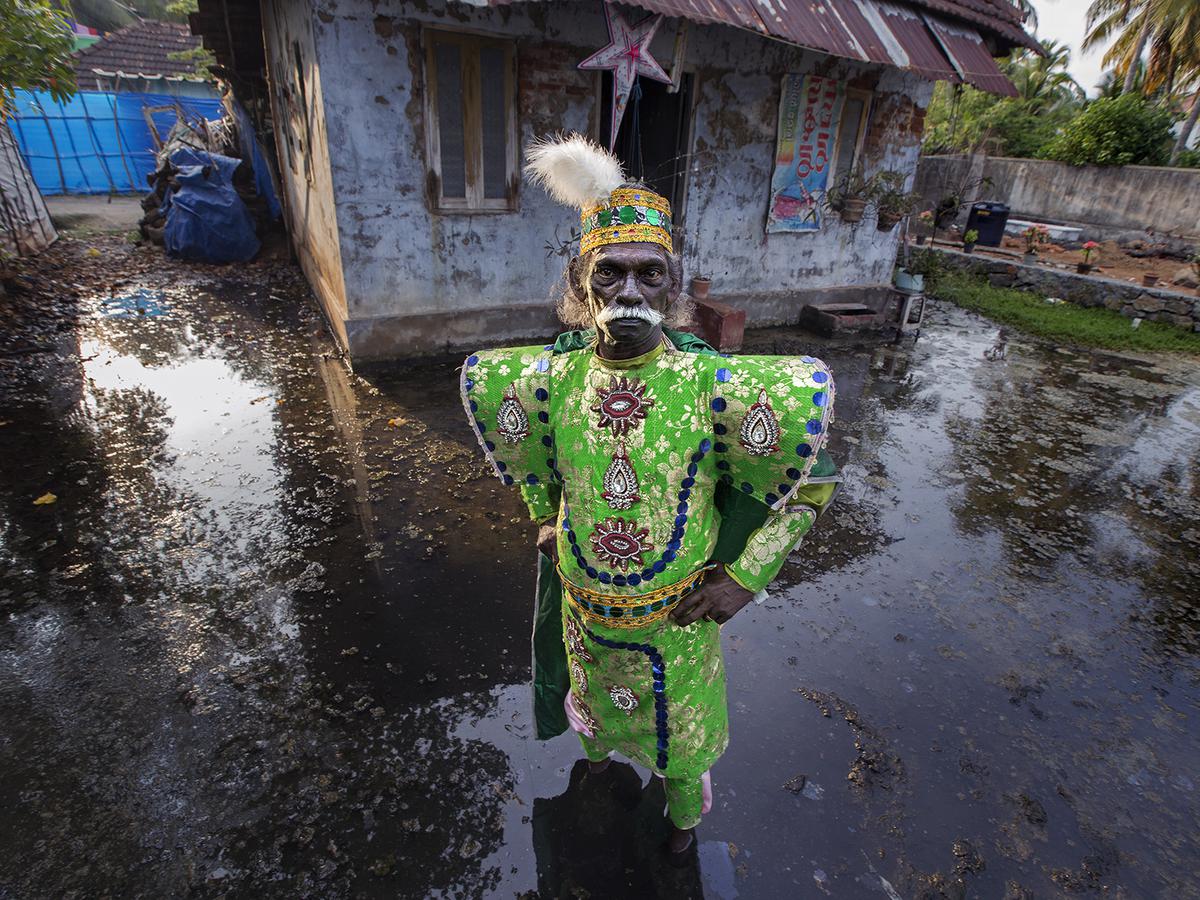
Antony grappling with the effects of climate change. Photo Credit: KR Sunil
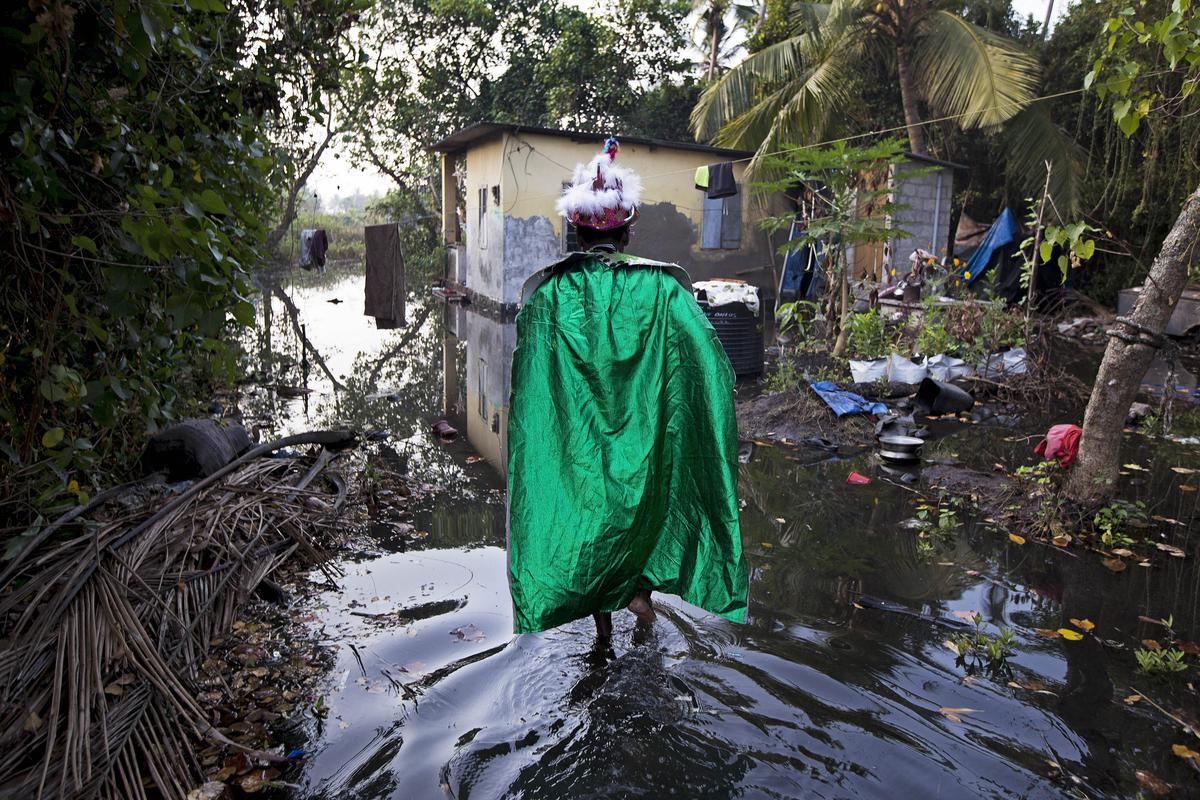
Chavittu Nadakam artist Thankachan outside his house | Photo Credit: KR Sunil
Sunil’s preoccupation with people associated with the sea and maritime history has led to a number of series, including lost life worldOn the people in the erstwhile port town of Ponnani (exhibited at the 2016 Kochi-Muziris Biennale), and their 2020 HouseWhich had images of seas claiming homes off the coast of Kerala.
In a marked deviation, his latest work is a series of 32 staged photographs featuring Chavittu Nadakam artistes in their costumes against the reality of their homes, each frame reflecting the helplessness and uncertainty of their lives.
Sunil’s work is part of C: A Boiling Vessel, presented by Aaji Archives (with Riyas Komu as its artistic director), and will run parallel to the Kochi-Muziris Biennale, It is at Kashi Halegua House and Heritage Arts on Jew Street in Mattancherry for the next three months.